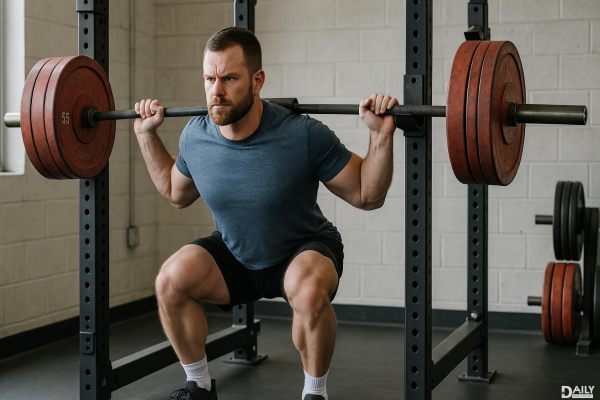Mike didn’t just wake up jacked—his muscle gains came from a strategic combo of high-protein foods and omega-3s. While most gym bros obsess over protein shakes and chicken breasts, Mike cracked the code by balancing his macros with nutrient-dense foods that fueled recovery and growth. The secret? It’s not just about slamming protein; it’s about smart nutrition that supports muscle synthesis while keeping inflammation in check. Here’s how he did it—and how you can too.

Let’s get one thing straight: protein is the building block of muscle, but not all protein is created equal. Mike’s diet included a mix of fast-absorbing whey post-workout and slow-digesting casein before bed, but he also leaned on whole-food powerhouses like grass-fed beef, wild-caught salmon, and pasture-raised eggs. These aren’t just protein bombs—they’re packed with micronutrients like B vitamins, iron, and choline, which optimize energy and recovery. And yeah, he ate his veggies too—spinach and broccoli aren’t just for show. Their fiber helps with digestion, ensuring all that protein doesn’t leave you bloated like a balloon.
Here’s where most lifters drop the ball: ignoring fats. Omega-3s, found in fatty fish, flaxseeds, and walnuts, aren’t just for heart health. They reduce muscle inflammation, speeding up recovery so you can hit the gym harder, sooner. Mike made sure to get at least 2–3 servings of salmon or sardines weekly, and when he couldn’t, he supplemented with high-quality fish oil. The result? Less soreness, better joint mobility, and a body that didn’t feel like it got hit by a truck after leg day.
Mike didn’t just eat—he ate with purpose. His golden rule? A protein-rich meal within 30 minutes of training to kickstart muscle repair. But he also spaced his meals evenly, aiming for 4–6 smaller meals a day to keep amino acids flowing to his muscles. And no, he didn’t skip carbs—sweet potatoes and quinoa fueled his workouts without the crash that comes from processed junk. Late-night cravings? Cottage cheese or Greek yogurt with almond butter kept his metabolism humming overnight.
While Mike’s foundation was whole foods, he wasn’t anti-supplement. Beyond fish oil, he swore by creatine (yes, it’s safe and effective), vitamin D (especially in winter), and a quality multivitamin to fill gaps. But he avoided flashy “miracle” powders—no shady pre-workouts or overpriced BCAAs. His philosophy? Keep it simple. If it didn’t have decades of research backing it, it didn’t make the cut.
Here’s the real kicker: Mike didn’t rely on shortcuts. He tracked his macros, sure, but he also listened to his body. If he needed an extra rest day, he took it. If he craved pizza, he enjoyed a slice—without guilt. Muscle isn’t built in a day, and obsessing over every calorie can backfire. His progress came from showing up, meal after meal, workout after workout. No magic, just discipline—and a killer playlist to power through those last reps.
Mike’s approach proves that muscle isn’t just about lifting heavy—it’s about feeding your body right. High-protein foods and omega-3s were his staples, but the real secret was balance. So ditch the all-or-nothing mindset. Eat smart, train hard, and let the gains come.
























